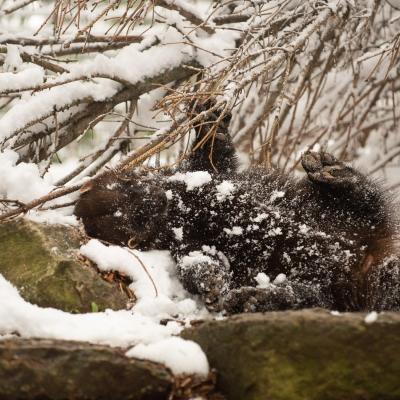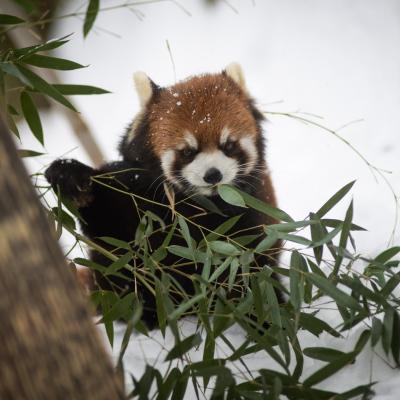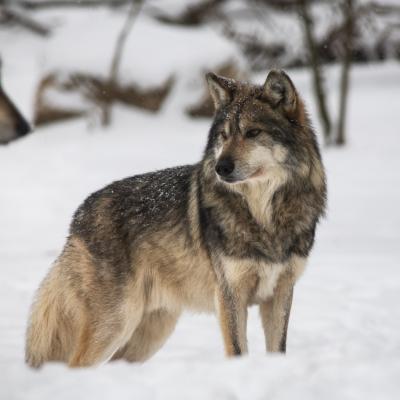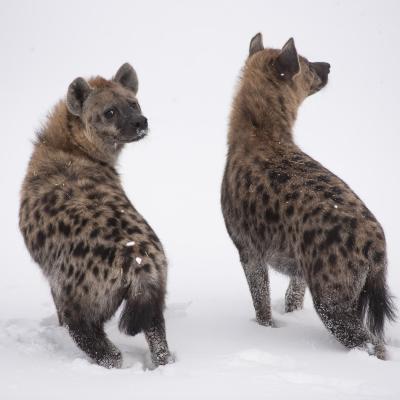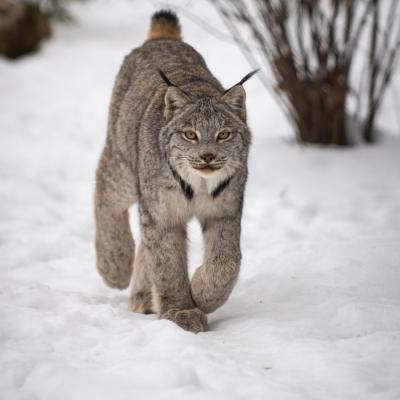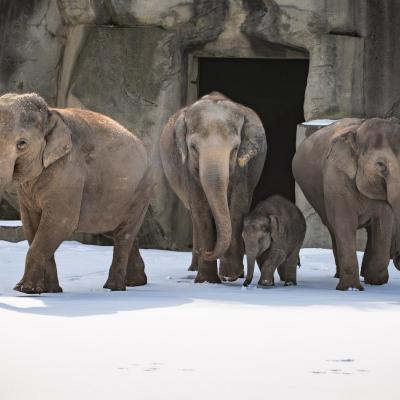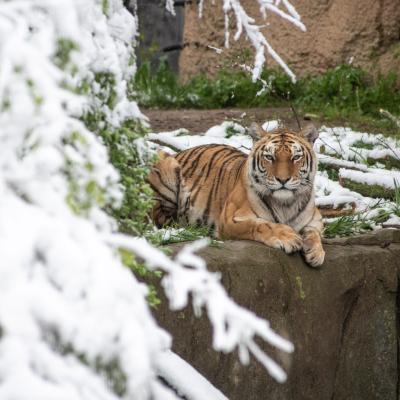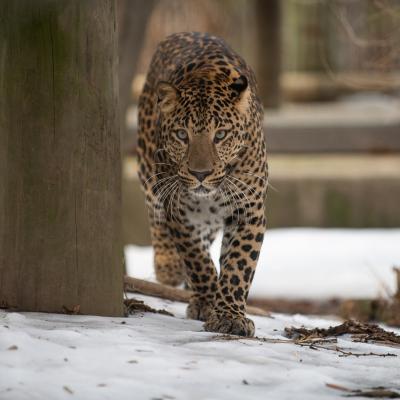Like any other child, I was fascinated by the Columbus Zoo at a young age. Excursions to the Zoo were often field trips for my northwest Ohio school, and I remember always wondering one particular question...
Where do the animals go in the winter?
My teacher attempted to give me an answer. “Maybe Florida? Somewhere warmer? I don’t think they like cold temperatures.”
So, is that correct? Is there a safari-themed vehicle that ferries lions and elephants and reptiles from Ohio to a warmer climate where beaches and vacation selfies await?
No. In fact, they remain warm and safe behind-the-scenes at the Columbus Zoo and Aquarium…and some animals actually prefer the cooler temperatures!
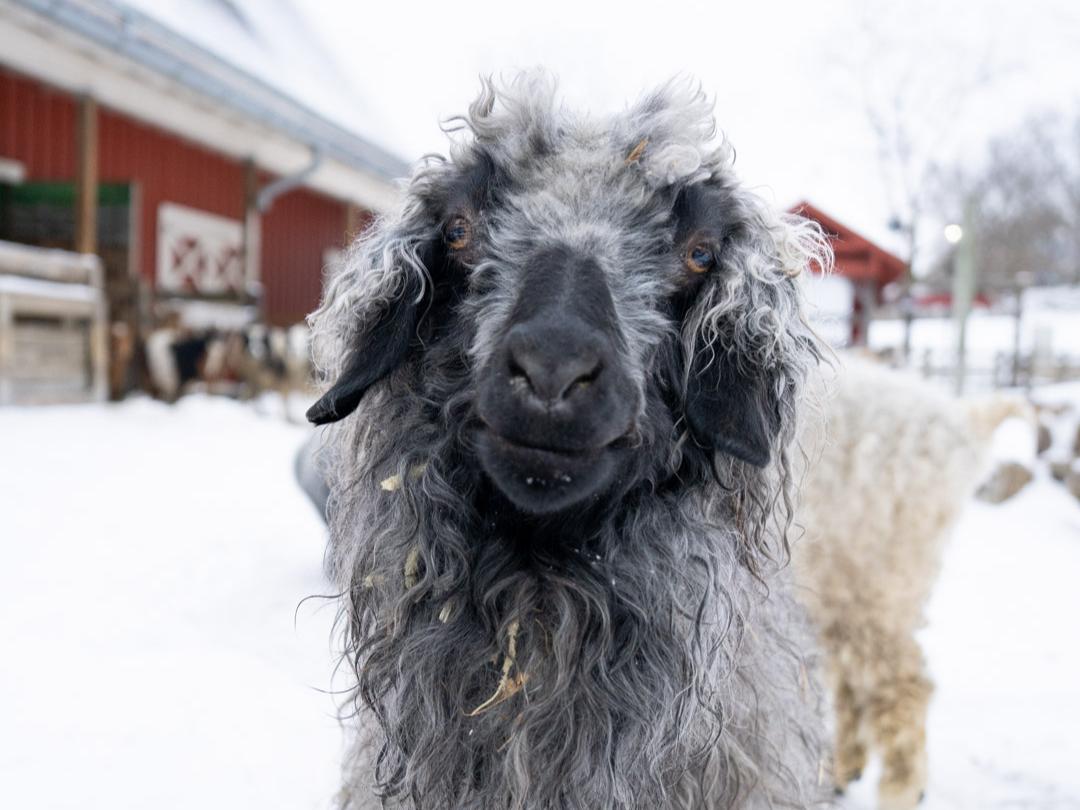
Can Animals Acclimate to the Cold?
At the Zoo, the wellbeing and safety of the animals in our care is at the forefront of every decision. Whether or not to keep an animal inside during chillier months is guided by a detailed list of every species’ preferred conditions, their body mass, their surface area relative to their size, weather conditions, and statistics based on animal husbandry manuals endorsed by the Association of Zoos and Aquariums (AZA) which reflect adjustments specific to how animals have adapted to their Central Ohio environment.
“One of the biggest misconceptions is that animals can’t acclimate,” said Adam Felts, Senior Curator and Director of Animal Wellbeing. “Guests are always pleasantly surprised when they see an animal enjoying the outdoors during the winter that they didn’t expect.”
While some animals may not be viewable to guests during the winter months, and some are visible year-round, every animal has an indoor facility and also has the option to enjoy the outdoors as well (with the exception of our cold-blooded friends who prefer the indoors). Zookeepers, however, play a large role in the decision for the animal to have outdoor access too.
By examining several factors like air and surface temperatures and animal dispositions, the keeper acts in the best interest of the animal’s safety and wellbeing.
For example:
- Giraffes can comfortably enjoy temperatures as low as 50 degrees Fahrenheit but could slip and fall if the ground is still wet from a recent storm.
- The okapi might be comfortable trotting outside in December… if it is not too windy.
- Cheetahs may be seen outside playing in the snow but are likely to be kept safe indoors if ice poses a danger to the animal’s footing.
Winter Rejuvenation
Preserving nature is also a high priority at the Columbus Zoo and Aquarium. For example, the Heart of Africa savanna closes in early November to animal residents and human guests alike to allow time for rejuvenation. The animals living in this region, however, have outdoor yards they can enjoy in the meantime along with cozy indoor quarters.
Winter at the Zoo: A Different Experience Every Time!
Because a species’ outdoor schedule is as unpredictable as Ohio weather, a different adventure awaits you upon every visit, and the animals you may see outdoors may surprise you!
- Despite their “King of the Jungle” title, lions like to lounge in the snow.
- Guests may see our elephant herd playfully toss snow onto their backs…including Frankie! Because of their size, elephants lose heat slowly and can tolerate lower temperatures.
- Unsurprisingly, the species living in our North America region – including, but not limited to, the wolverines, moose, arctic foxes, brown bears, cougars, reindeer, Mexican wolves, and swans – all have outdoor access throughout the winter.
- Some African hoofstock animals, like zebras, have the option to remain in their warm barn or enjoy the outdoors in off-exhibit yards. Others, like the Wildebeest, have outdoor access all year round and may be viewable to guests.
- Slender mammals, like vervet monkeys, aren’t huge fans of cooler temperatures and enjoy their state-of-the-art indoor facility when temperatures drop.
- Of the animals not native to North America, the tigers at the Zoo are some of the most tolerant of this continent’s weather. Native to far-east Russia and northern China, the Amur tiger can thrive in the snow. Visitors may catch these large cats pouncing on snowmen built by their keepers or using their bellies as bobsleds.
- Outside of the main viewing area, the giraffe barn is designed to accommodate not only its inhabitants’ size, but their social behaviors as well. Open access areas allow the animals to find some privacy without secluding themselves from the herd. Large groups can congregate in a community area where they can nibble on branches or raised troughs. Even when it’s too cold outdoors for these weather-sensitive mammals, the giraffes can still enjoy the sunlight pouring in through ceiling skylights which are specifically-designed to allow the UV rays in that are important to their health. You can schedule an experience with the Zoo’s giraffes by taking a behind-the-scenes tour!

As a child, I would have loved an opportunity to visit the Columbus Zoo and Aquarium during the winter. If I did, I would have had an opportunity to speak with friendly docents and experienced animal care team members and learn about the species in their respective regions. I would have been able to watch the animals enjoy playing in the snow…just like I did on those days when we didn’t have school.
I encourage you to bundle up and trek to the Columbus Zoo and Aquarium this winter! The adventure is winter-proof and closer than you may think.

